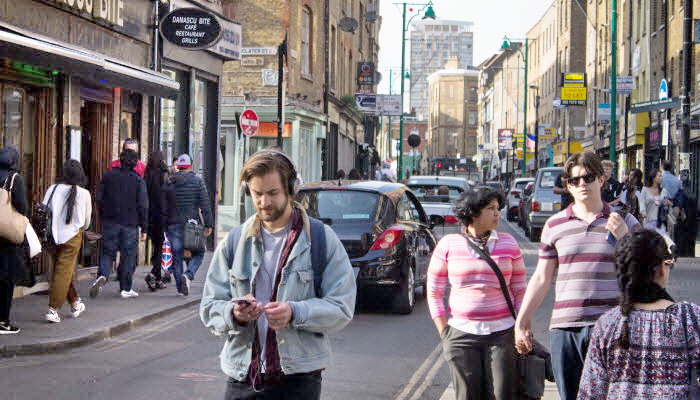
Organisational design has pretty much following the same paradigm since Frederick Taylor introduced so called scientific management early in the 20th century.
In the emerging world of industrialisation his focus on efficiency worked. He did this by creating highly prescriptive job profiles and segmenting outcomes into simplified tasks that could then be scaled as industrialisation spread.
We are still operating by degrees to this model. Functional silos have blinkered responsiveness in a new era which is characterised by not merely the complicated (which Taylor’s approach worked well for) but now the complex.
This is born from decades of technology innovation that has birthed our connected world.
Speed and interconnectedness make organisational life complex and its effect is greater unpredictability.
This shows up in the shortened lifecycle of brands. In the sudden appearance of market disrupters such as Uber and Airbnb. And in the increasingly autonomous behaviour of customers now empowered to know brands often better than their makers.
Customer Hubs Provide An Appropriate Response
Since little has really changed since Taylor’s day, beyond following his vision for every increasing levels of efficiency, it follows that organisations are ill prepared for re-invention.
Whenever tried, the instinct is to bet the house on large scale linear change. Research on such approaches show a high casualty rate averaging 70% failure.
The reason they fail is due to unpredictability. In other words they are not designed to be resilient to unforeseen changes or be able to adapt as a project is brought to life.
Becoming a digital organisation presents the same odds of failure for anyone needing to sanction a strategic response to the changes they can now see affecting their ‘business as usual’.
The operating model of a customer hub is not so much an investment in new technology as a re-organisation of the existing competencies that an organisation possesses as related to customer engagement. This can include marketing, sales, customer service, analytics, change management and collaboration.
The innovation lies in the way that these competencies are encouraged to interact and develop interdependent teamwork. This is in marked contrast with the more typical lack of coordination seen between functional teams.
This is caused by the historic impact that Taylorism has had on annual planning, budget allocation and KPIs. These are typically formed and validated within the context of functional remits as opposed to a holistic view of the customer lifecycle or overall market trends which are best responded to in a co-ordinated way.
‘As you goal them so they behave’ goes the saying. Customer hubs recognise the quick wins that are available once motivation and focus are aligned across relevant teams. They allow existing teams to keep producing their usual outcomes.
However through ‘same room’ teamwork, these outcomes quickly become synergised by exploiting opportunities and reducing unintended duplication and wasted effort from silo responsiveness to customers and competitors.
As such customer hubs are immediately smarter and more productive than their functional equivalents.
One of the reasons for poor alignment in organisations is the lack of proximity in working together. There is compelling research showing the benefits of co-locating teams in the same environment such as increased responsiveness and higher productivity.
How They Work
Customer hubs act as small scale incubators to encourage post silo behaviours for the rest of the organisation to learn from.
Functional teams provide recruits to be seconded to a customer hub who are then trained in ‘digital’ mindset and skills before returning to their original teams after their ‘tour of duty’.
During that time they will have provided a point of liaison with their old teams to strengthen the flow of ideas and activity between the hub and lines of business. And infect ‘business as usual’ with new thinking.
Customer hubs are designed as showcase environments in which everyone works together. A common contextual awareness is developed via daily briefings, common dashboards and visibility of the ‘bigger picture’ – introduced at the initial induction and then through daily coaching.
Voice of the customer wallboards and dynamically updated customer journey maps are used to provide an ‘outside-in’ view to both hub members and visitors who are encouraged to engage with the hub as a source of live market feedback.
In their most mature phase a customer hub will be engaging across the customer cycle using sales, marketing and service competencies. Campaigns are co-ordinated whenever it makes sense. Real time analysis and team based feedback provide the basis of a daily commentary between all teams in which opportunities and challenges are collectively explored.
Analysts and change management teams augment the core focus on engagement with insight and change initiatives that are launched as a result of the analysis. Failure demand is tackled, customer journeys are improved and fresh product and service innovation is developed.
Around all this activity is ongoing communication between the hub and the rest of the organisation so that the hub functions as a source of live insight into customer and competitor activity. In effect it enables an organisation to become truly customer focussed.
However the beauty of the customer hub model is that organisation can start with a more stripped down version. This allows them to harness whatever existing assets are available and begin their journey without the time and effort involved in lengthy investment cases and the like.
Anyone can start a hub tomorrow as part of their existing customer engagement operation.
The team at Beyond Silos is currently on the look-out for early adopters of the customer hub approach. Please get in contact if you feel your interests match our ambitions.




